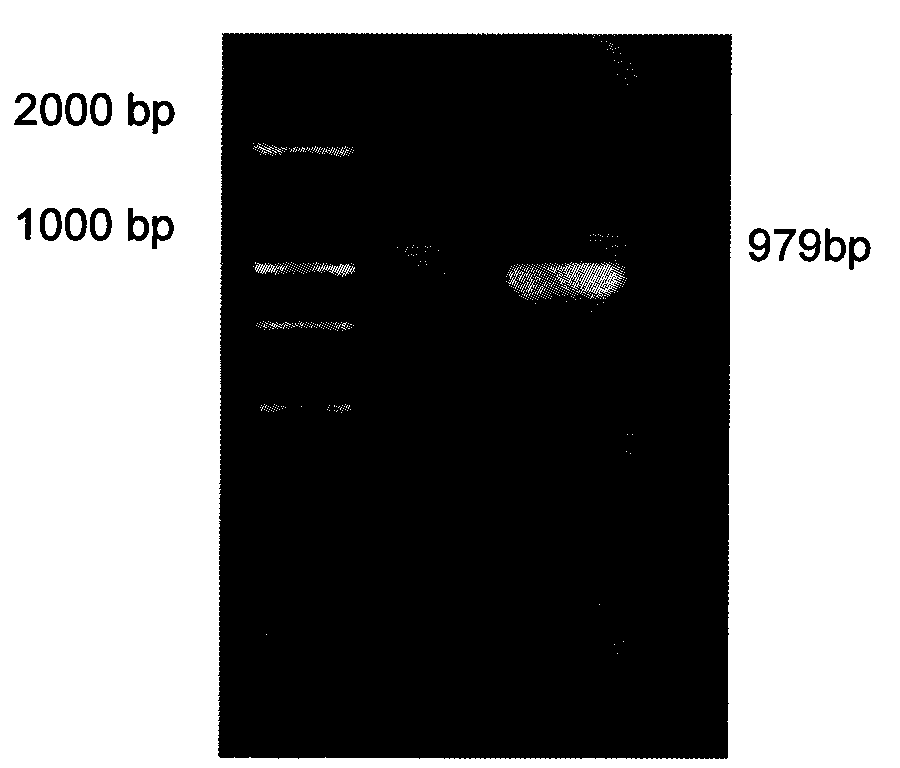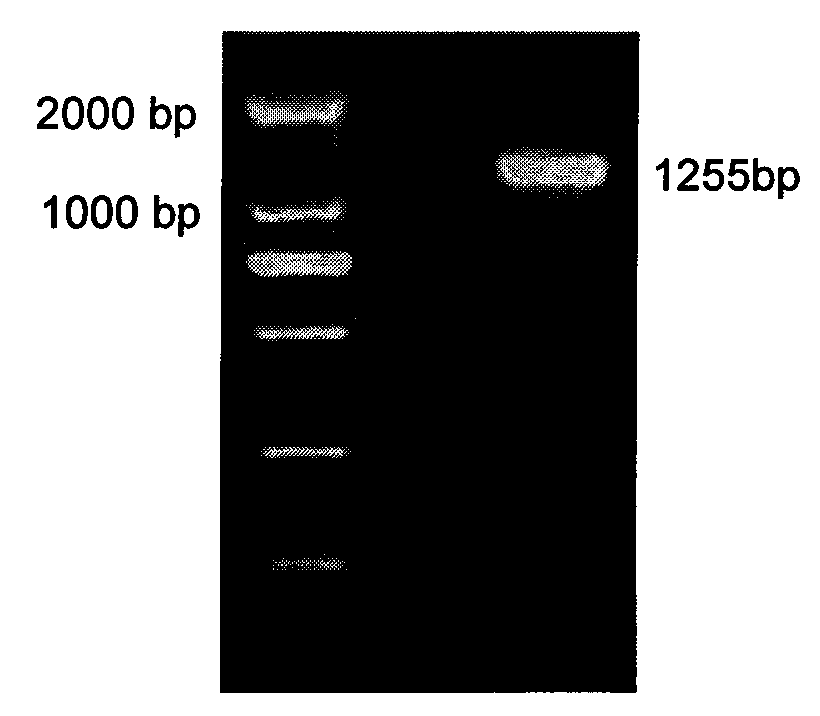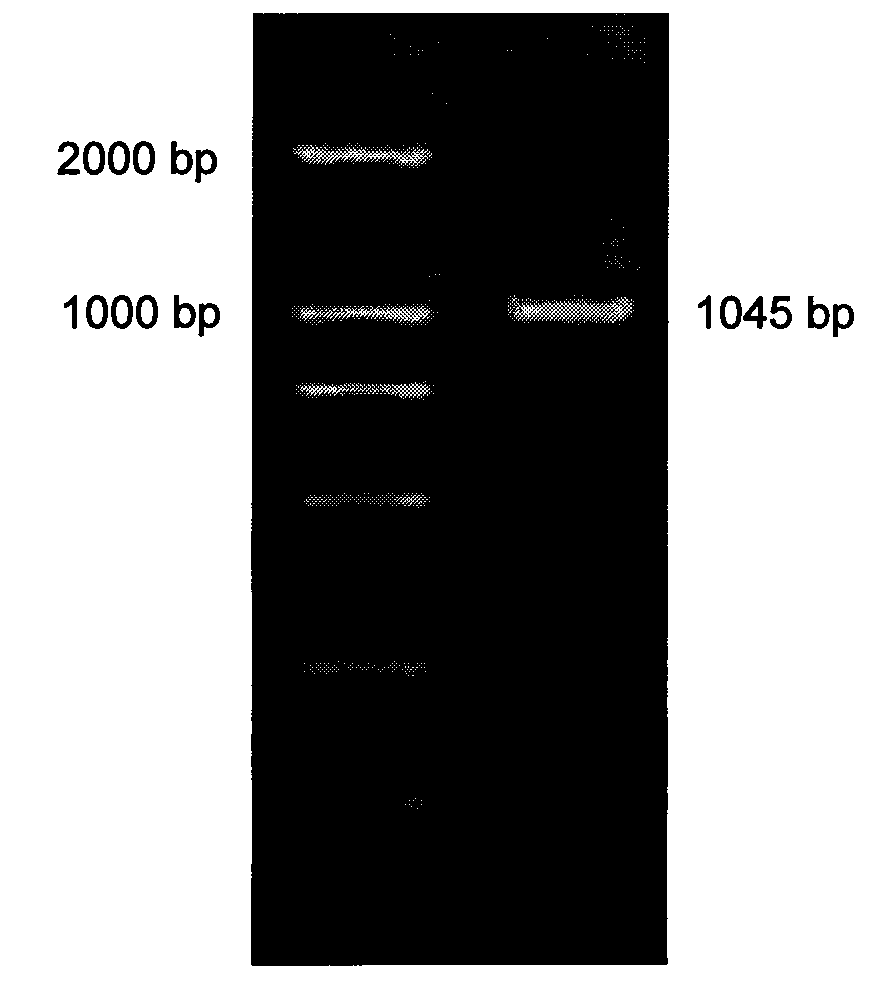Gene sequence of trehalose-6-phosphate synthetase derived from selaginella pulvinata
A technology of phosphate synthase and Selaginella mats, applied in the field of plant genetic engineering, can solve the problems of limited research and development of TPS gene
- Summary
- Abstract
- Description
- Claims
- Application Information
AI Technical Summary
Problems solved by technology
Method used
Image
Examples
Embodiment 1
[0116] This embodiment is the extraction and purification of the total RNA of Selaginella cuspidatum leaves, comprising the following steps:
[0117] (1) Put the young leaves of Selaginella cushion-like into a mortar pre-cooled by liquid nitrogen, immediately add liquid nitrogen, grind the sample as much as possible, and put the sample into 0.1g per tube before the liquid nitrogen volatilizes. Immediately add 1 mL Trizol (Invitrogen) to each tube in a 1.5 mL centrifuge tube pre-cooled with liquid nitrogen, shake vigorously, and place at room temperature for 5 min.
[0118] (2) Centrifuge at 4°C and 12000r / min for 2min, and transfer the supernatant into a new RNase-free centrifuge tube.
[0119] (3) Add 0.1mL 5mol / L NaCl to each tube, mix well, then add 0.3mL chloroform to each tube, shake vigorously for 15s, place at room temperature for 3min, centrifuge at 12000r / min at 4°C for 15min, avoid inhalation as much as possible In the case of the intermediate layer, aspirate the su...
Embodiment 2
[0123] This embodiment is the cloning of the middle fragment of SpTPS1 gene, the method is as follows:
[0124] Using the purified total RNA of Selaginella cuspidatum leaves obtained in the above-mentioned Example 1 as a template, oligod(T)18:5'-GCTGTCAACGATACGCTACGTAACGGCATGACAGTG(T) 18 -3' is the reverse transcription primer, according to Takara's PrimeScript TM The Reverse Transcriptase manual was used to synthesize the first strand of cDNA, and the total volume of the amplification system was 20 μL; the first strand of cDNA of the middle fragment was obtained.
[0125]First, by comparing the amino acid sequences of five known trehalose-6-phosphate synthases: Selaginella lepidophylla TPS1 U96736.1; tomato TPS1 (Solanumlycopersicum TPS1E.F151131.1); Arabidopsis TPS1 (Arabidopsis thaliana TPS1NM106505.4); TPS1 (Physcomitrella patens subsp TPS1XM001778453); sugarcane TPS1 (Saccharum hybrid cultivar TPS1 EU761244), the conserved region in the middle position was determined, a...
Embodiment 3
[0161] This embodiment is the cloning of the 3' end of the SpTPS1 gene, the method is as follows:
[0162] According to the sequencing results of the above intermediate fragment, design and synthesize a specific upstream primer:
[0163] S1: 5'-GCCATCAGAGAAAGCGGTTACT-3',
[0164] In addition, design and synthesize a 3′ end universal downstream primer:
[0165] AP2: 5'-TACGTACGGCATGACAGTG-3';
[0166] Using the first strand of the intermediate fragment cDNA obtained in the foregoing Example 2 as a template, PCR amplification was performed using upstream primer S1 and downstream primer AP2;
[0167] The amplification system is:
[0168] TaqPlusPCR Master Mix 10μL,
[0169] cDNA template 2 μL,
[0170] 2× Primer (S1 / AP2) 0.5 μL,
[0171] wxya 2 O 7μ.
[0172] The amplification procedure is:
[0173] 94°C, 3min;
[0174] 94°C, 30s; 55°C, 45s; 72°C, 1min 30s (33 cycles)
[0175] 72°C, 8min; keep warm at 12°C.
[0176] The resulting amplified products were detected by 1%...
PUM
 Login to View More
Login to View More Abstract
Description
Claims
Application Information
 Login to View More
Login to View More - R&D
- Intellectual Property
- Life Sciences
- Materials
- Tech Scout
- Unparalleled Data Quality
- Higher Quality Content
- 60% Fewer Hallucinations
Browse by: Latest US Patents, China's latest patents, Technical Efficacy Thesaurus, Application Domain, Technology Topic, Popular Technical Reports.
© 2025 PatSnap. All rights reserved.Legal|Privacy policy|Modern Slavery Act Transparency Statement|Sitemap|About US| Contact US: help@patsnap.com



